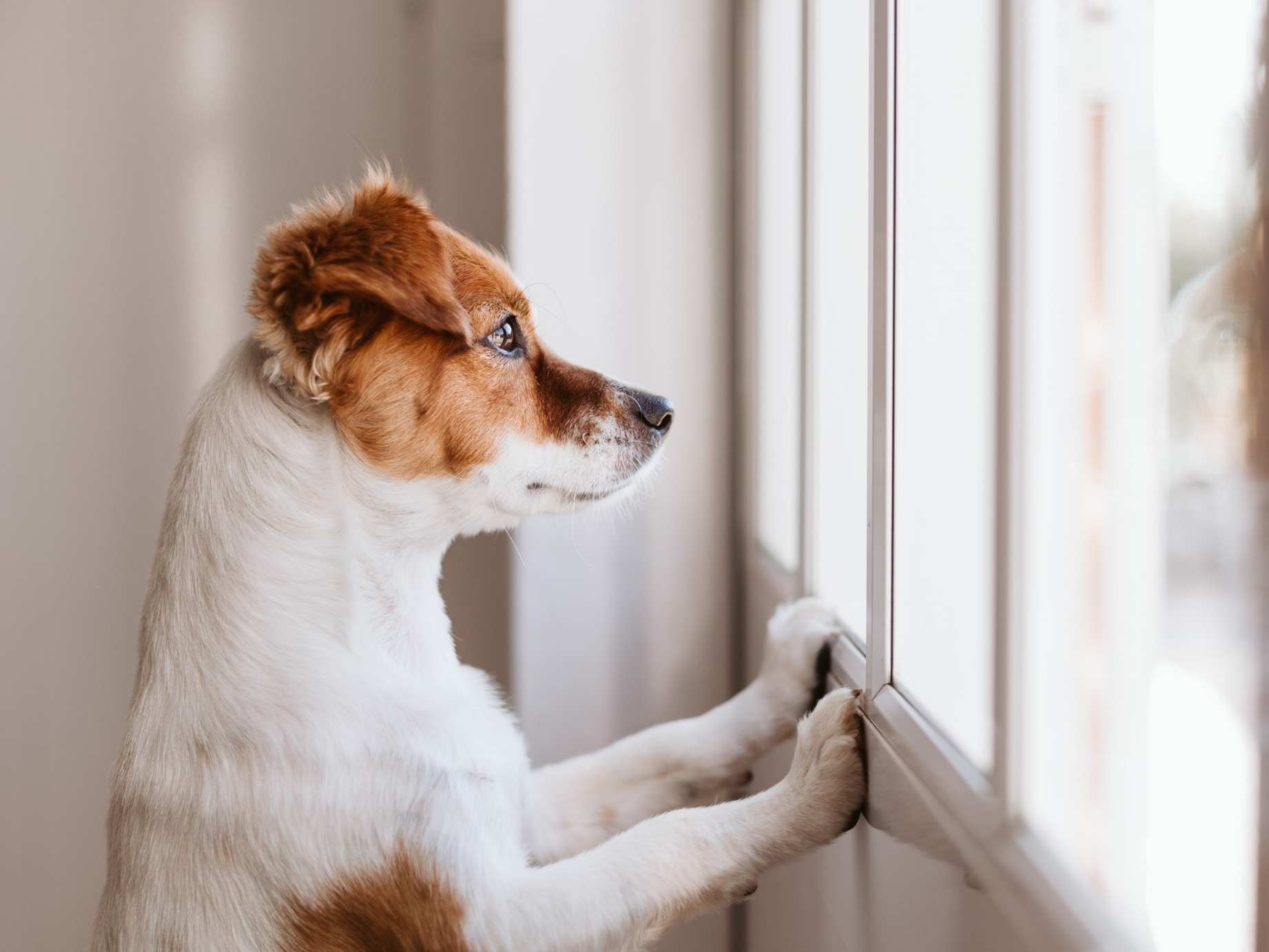The University of Illinois College of Veterinary Medicine reports that 20 to 40 percent of dogs exhibit separation anxiety. Through our survey research, we discovered that before the COVID-19 pandemic, only 11% of respondents spent 21-24 hours per day at home with their dog. Today, that number has grown to 38%. While going back to school or the office may feel like returning to normal for many humans, the opposite is true for pets adopted during the COVID-19 pandemic, who will be spending less time with their owners.
Just like the first week of adopting your dog or starting puppy training, there are proactive steps you can take to reduce your dog’s risk of developing separation anxiety when you leave the house.
Signs your dog may be experiencing separation anxiety
Look out for these signs of separation anxiety in your dog:
- Is your dog or puppy barking or howling more than usual?
- Are they salivating or drooling more than they normally do?
- Do you notice anxious behaviors in your dog as your prepare to leave the house, like whining or shaking?
- Are they participating in unusual or destructive behaviors? This could include chewing or digging, especially around exits like windows or doors.
- Is your house-trained dog having more accidents around your house?
Ways to reduce or prevent separation anxiety in your dog or puppy
We spent some time with Margaret MacEwen, dog trainer and founder of Super Fine K9, to talk about what steps owners can take with their dogs to prevent separation anxiety from developing after the transition back to a normal routine.
Reduce separation anxiety with crate training while you’re in the house
MacEwen recommends crate training as a general rule. But she believes it’s especially useful right now, if you’re getting ready to start spending more time away from home.
If you haven’t yet gone back to work, it may seem counterintuitive to put your dog in a crate when you’re around most of the day to watch over them, but the perfect time to start crate training is when you are still around to keep an eye on your pup. The idea is to give your dog opportunities to be alone and to get comfortable with being in their crate.
Make the crate a positive experience for your dog while training them. You could give them a special toy only inside their crate, feed them their meals while the door is open, or even hide treats in the crate for your dog to find on their own. The more your dog associates their crate with a positive reward, the better.
Crate training while you’re home also lets you see how your dog reacts to their crate. If you go “cold turkey” and suddenly put your dog in a crate for a full workday without prior training, there’s no telling how they’ll respond. You want to build up to extended crate stays gradually and make sure your dog will be comfortable.
Find opportunities for your dog to socialize and explore new environments safely
If you and your dog have spent most of the pandemic inside, it’s time to start introducing them to other environments. MacEwen stresses the idea of expanding your dog’s world beyond your home, yard, and typical walking trail. Think about it: If all your dog knows is being home with you, how would you expect them to react when you’re away at work? You want them to be able to cope when they’re alone. A great way to accomplish this is to socialize your dog by exposing them to new places and things. This is even more important if you’re thinking of bringing them to dog daycare while you’re out of the house.
You probably have a common route around your neighborhood when walking your dog and meet plenty of new people and dogs then. MacEwen says to go a step further and take your dog for a car ride to a different neighborhood and walk them there. Show your dog that there’s more to the world than your current daily routine.
There’s an opportunity to work socializing your dog into errands, too. If you’re going to the store, bring another member of the household along with your dog. One of you can go in to handle groceries while the other walks the dog around the parking lot. You can park further from the entrance so you’re not wandering around in heavily-trafficked areas. It’ll be good for your dog to see and hear people, cars, and grocery carts.
You can also bring your dog with you to the pet store or even businesses like home supplies stores (just call ahead to see if they allow dogs inside).
Find ways for your dog to get used to being alone in small doses
MacEwen suggests finding opportunities to let your dog be alone where appropriate. Even something as small as checking the mail or taking a quick walk around the block will get your dog used to being in the house alone.
While you’re out you can help your dog get used to new people by knocking on the door or ringing the doorbell. Having guests over will be another change of pace for your dog, so getting them used to these signals for company is a good idea.
Patience is key
Even if you’re not leaving the house much yet, it may still be a good idea to start working with your dog on methods to reduce separation anxiety. Raise your dog for the future, not just today. Taking steps to reduce separation anxiety now will help offset any unexpected behaviors when your dog has to be alone during the day. Remember that change can be stressful for a dog and be patient as your work with your pup on this transition.













